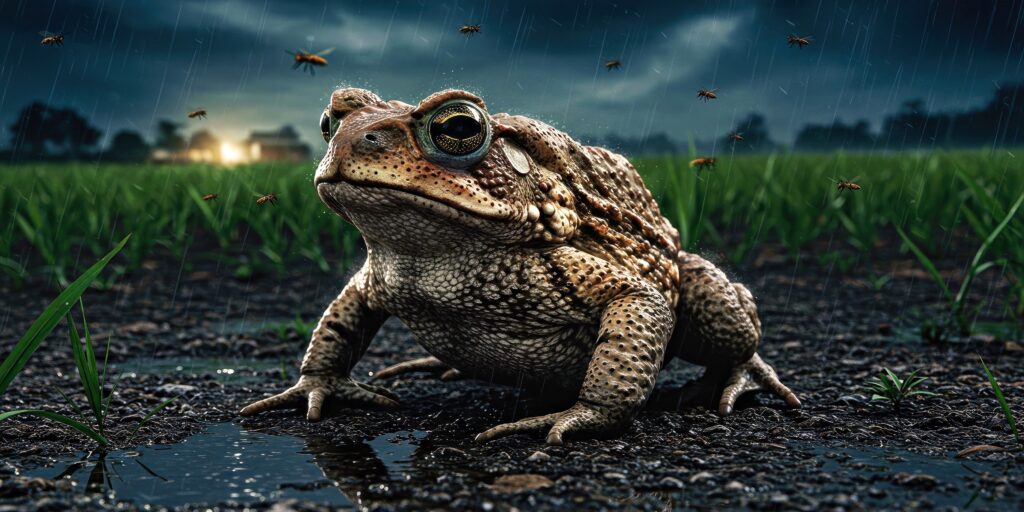

Florida’s Toxic Invader: The Cane Toad’s Quiet Takeover
Florida’s Toxic Invader: The Cane Toad’s Quiet Takeover
ORLANDO, Fla. — On a humid Florida night, the low, guttural trill of a toad might not seem like a cause for alarm. But wildlife experts warn that one particular amphibian hopping around lawns and canals across the state carries a deadly secret: the cane toad, better known to longtime Floridians as the “Bufo” toad.
Brought here nearly a century ago in a failed pest control experiment, the cane toad has since carved out a foothold across South and Central Florida. And while it may look unassuming, this invasive species is capable of killing a family pet in mere minutes.
From Sugar Fields to Suburbs
The cane toad’s Florida saga started in the 1930s, when agricultural officials imported the amphibians to fight beetles damaging sugar cane crops. That initial attempt fizzled. But in the 1950s, a shipment of roughly 100 toads was accidentally released at Miami International Airport by a pet importer.
“That incident, combined with other releases across South Florida, sparked the population we see today,” researchers at the University of Florida’s Institute of Food and Agricultural Sciences (UF/IFAS) note. Now, cane toads are common across South Florida, stretching into Polk County and even establishing a strange outpost in DeLand.
A Pet Owner’s Nightmare
For many Floridians, the first encounter with a cane toad isn’t in the wild—it’s in the backyard. Dogs and cats, curious by nature, often try to bite or lick the toads. The results can be catastrophic.
“The toxins secreted from their skin can cause frantic or disoriented behavior, brick-red gums, seizures, and foaming at the mouth,” warns the Florida Fish and Wildlife Conservation Commission (FWC). Without immediate intervention, an animal can die within 15 minutes.
Veterinarians and officials advise pet owners to act quickly: flush the pet’s mouth with running water for 10 minutes (without forcing water down the throat), wipe the gums and tongue with a cloth, and head straight to a vet’s office.
Not Just Dangerous—Deceptive
Cane toads complicate matters by resembling the native southern toad, which plays a valuable role in Florida’s ecosystem by eating insects. The difference can be subtle. Wildlife experts urge residents to study identification guides before taking action.
Adding to the complexity: it’s perfectly legal to own a cane toad as a pet in Florida, but releasing one into the wild is prohibited. Meanwhile, homeowners who discover cane toads on their property are allowed to remove and humanely euthanize them. Gloves, goggles, and protective clothing are recommended, since even skin contact with their secretions can cause irritation or burns.
A Spreading Threat
For all their risks, cane toads are survivors—highly adaptable, breeding in ditches, canals, and even suburban ponds. Each female can lay thousands of eggs, all laced with toxins. Their resilience, paired with Florida’s warm climate, makes eradication unlikely.
As the state continues to wrestle with invasive species—from pythons in the Everglades to iguanas on canal banks—the cane toad stands out for its everyday impact on people and pets.
“They may not be as flashy as a giant snake,” one UF researcher put it, “but for many Floridians, the cane toad is the invasive they’re most likely to meet face-to-face—and the one that could cost them a beloved pet.”
For now, experts say vigilance is the best defense: learn to identify the toads, protect pets, and stay cautious when the Florida night chorus grows just a little too loud.